We’ve been inspired by some creative social distancing guideline infographics, like this one and this one. Being sustainable seafood people through and through, we had to share our own take to inspire people to have a little fun while also staying safe!
The next time you’re heading out for groceries, walking the dog, or getting some much-needed sunshine, picture these species to make sure you’re keeping enough distance between you and others when you have to go outside!Social Distancing With Swordfish
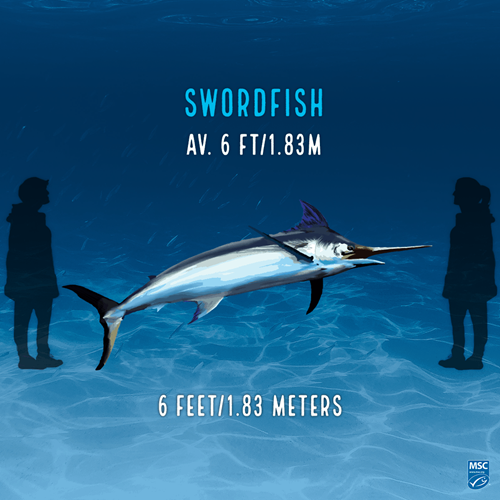
While occasionally much larger, the average swordfish (Xiphias gladius) landed by fishermen is six feet long – a perfect measure for appropriate social distancing! Much of the swordfish’s length comes from its iconic bill. Differing from other fish with bills (like the sailfish or marlin), the swordfish has a flattened bill, making it look like – you guessed it – a sword. Though, similarly to its cousins, its bill can be used to slash larger prey.
They Swordfish can grow up to 15 feet (~4.5 meters) and weigh 1,400 pounds (~650 kilograms) at their largest. Swordfish are found around the world in the Atlantic, Pacific, and Indian Oceans; in fact, there are three MSC certified swordfish fisheries in North America alone!
Swordfish is a popular choice amongst seafood-eaters. It has a firm texture and is high in Omega-3 fatty acids, making it a great source of protein. To learn more about the ocean-to-plate story of swordfish, check out this episode of the travel and cooking show Food Quest, featuring the US Atlantic Swordfish fishery.
Social Distancing With Skipjack Tuna
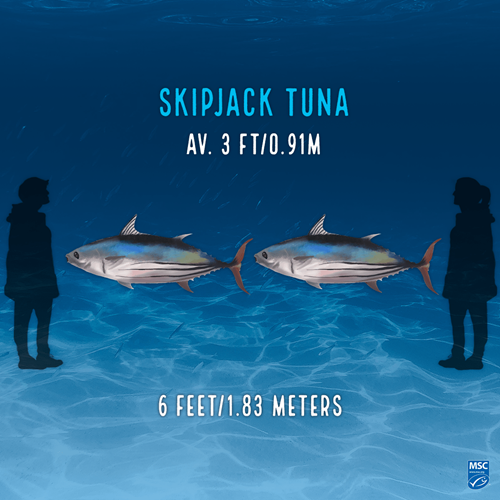
If you’ve ever enjoyed a tuna melt, a classic tuna salad sandwich, or really any recipe featuring canned tuna, there’s a good chance you’ve had skipjack (Katsuwonus pelamis). This abundant species of tuna grows up to three feet (~1m) in length. Next time you go out, just make sure to keep two skipjacks between you and anyone else.
Skipjack is the smallest of its tuna relatives. Yellowfin tuna can grow up to about seven feet, while bluefin tuna can reach lengths of 10 feet!
Skipjack is one of the most commonly canned species of tuna, and nearly half of the world’s skipjack population comes from the PNA (Parties to the Nauru Agreement), a coalition of eight (+1) nations in the Pacific Ocean formed to take better care of their collective marine resources.
Social Distancing With Alaskan Pollock
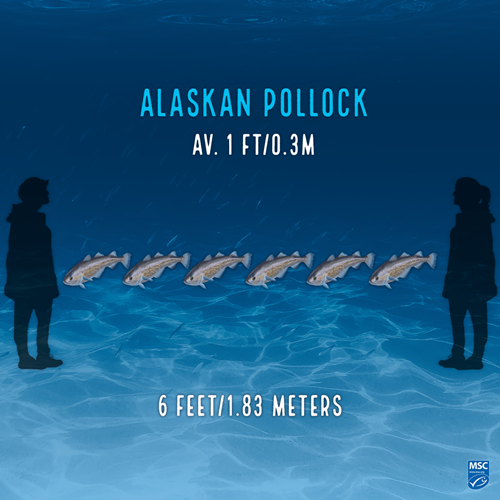
Have you ever eaten California rolls with “imitation crab”? Or other sushi rolls with surimi? What about a McDonald’s Filet-O-Fish? If so, you’ve probably had Alaska pollock (Gadus chalcogrammus)! While not often found as whole fish in your grocery store, pollock is an incredibly versatile seafood option that can be found in everything from sushi to fish sticks. Clocking in at an average of one foot (0.3m), Alaska pollock could theoretically also be used as a substitute for a ruler.
Just picture six Wild Alaska Pollock lined up the next time you’re looking for fish sticks in the frozen aisle.
Learn all about the MSC certified wild Alaska Pollock fishery that recently celebrated 15 years of certification – the oldest certified fishery in North America!
Social Distancing With American Lobster
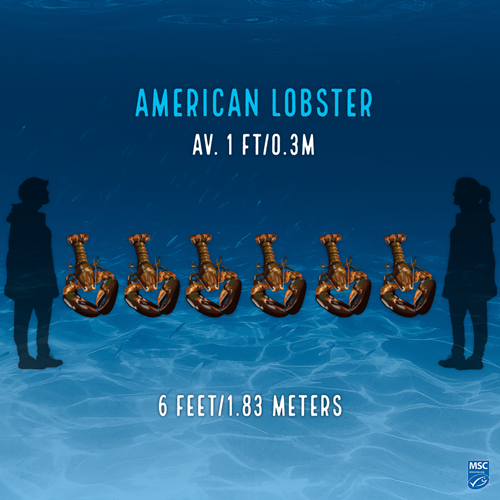
Lobsters come in a wide range of shapes and sizes, but the average American lobster (Homarus americanus) is about a foot. Picture six lobsters, claws and all, between you and others and you’ll be at a good, safe distance.
Even though they’re most commonly called American lobsters, these critters can be found as far north as Labrador, Canada and support a thriving fishery along the east coast of Canada.
While most lobsters average about a foot when caught, they can get much, much larger. The biggest lobster ever caught in Maine (home to another MSC certified lobster fishery) was 3.3 feet in length and weighed 27 pounds.
Social Distancing With Eastern Oysters
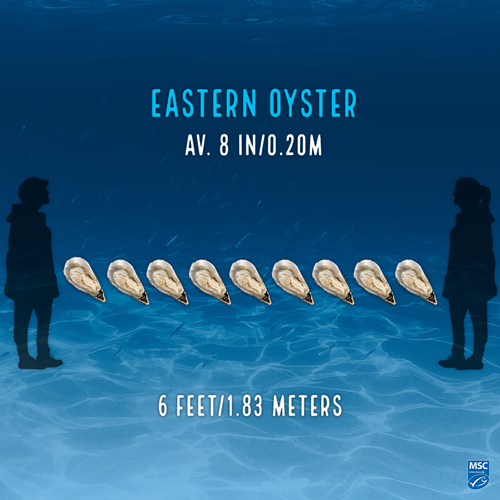
We’ve got a soft spot for the American cupped oyster or Eastern oyster (Crassostrea virginica) (fun fact: the first oyster fishery certified to the MSC Standard features eastern oysters!) Keep in mind, you’re going to need to picture nine oysters, as they grow to about eight inches in length.
In addition to being delicious and nutritious, oysters have a positive impact on the environment in which they live, as they filter water and remove excess nutrients!

